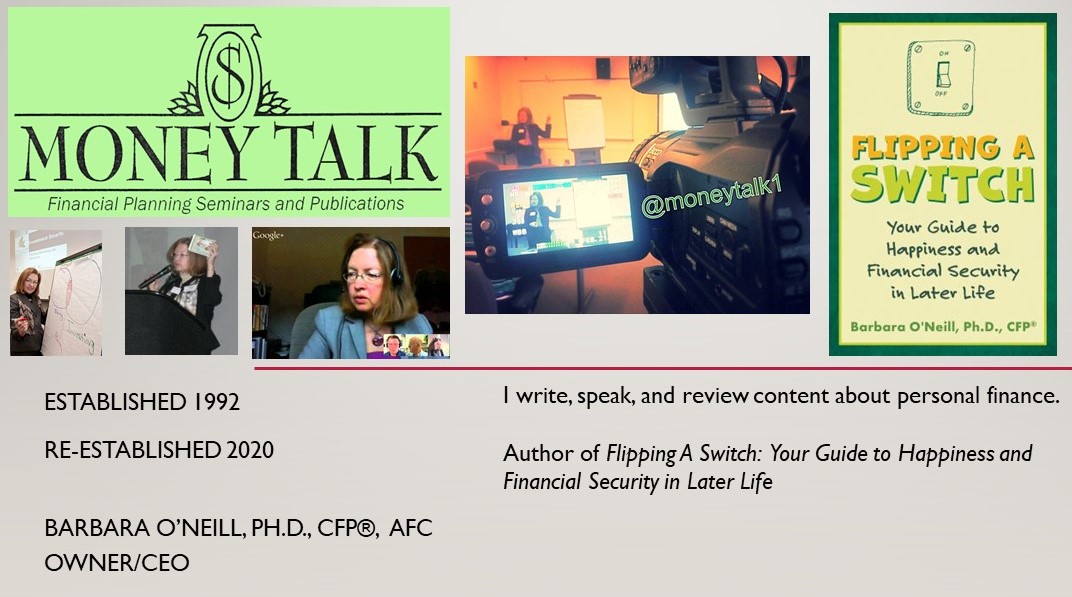I
recently attended a webinar
for financial educators about Trends in Personal Finance by Next Gen Personal
Finance (NGPF) founder Tim Ranzetta. The majority of the trends that were
presented were informed by effects of the ongoing COVID-19 pandemic.
Below are eleven
of my key take-aways from the webinar about how the pandemic is affecting different
aspects of personal finance. More trend summaries will follow in subsequent blog
posts.
¨
Record Savings
Rate- Americans are sitting on record cash savings
amid uncertainty related to COVID-19 and the economy. The U.S. savings rate hit
a record 33.5% in April and was 19% in June versus about 7.5% before the
pandemic. Reasons for increased savings include reduced spending opportunities (e.g.,
eating out, travel, and entertainment) in a shutdown economy and precautionary
savings because people do not know what the future holds.
¨
“Contactless” Credit Cards- Visa distributed 80 million contactless-enabled credit cards
during the first half of 2020 in response to concerns about virus transmission.
These cards
allow people to make quick “tap and go” payments by tapping a card in close proximity
(about 3 inches) to a contactless-enabled terminal, thereby eliminating the
need for swiping a strip or dipping a chip. The front of contactless cards has
an icon
that looks similar to a wi-fi symbol.
¨
Lower Credit Card Limits- Banks are issuing credit cards with lower limits
as they re-evaluate their lending standards
in light of financial stress caused by high unemployment and other COVID-19
impacts. The average credit line fell 9% to $5,257 according the credit bureau
TransUnion. Another action that many credit card companies have taken is to
close inactive accounts “to avoid being a borrower’s lender of last resort” after
borrowers “max out” their other credit lines.
¨
Less Credit Card Fraud- Fraud
related to credit cards was down 40% during the first half of 2020 compared to
the last six months of 2019. Possible reasons include less shopping traffic in
physical retail stores and less information obtained through skimming (attaching
a device to card readers to steal personal information, e.g., at gas station
terminals) and shimming (attaching a thin microchip enabled reader into slots
for chip-enabled cards) devices
as people stayed home.
¨
New FICO Score- The Fair Isaac Corporation (a.k.a. FICO) introduced a new credit
score called the FICO Resilience Index as an alternative measure of
creditworthiness. It is intended is be a “tiebreaker” for borderline credit
decisions involving borrowers with low credit scores who are still likely to
repay their debt in full. Scored from 1 to 99 (1 for the most resilient
borrowers), the index puts more weight on a long credit history, low credit
utilization, and few credit lines.
¨
New Mortgage Refinancing Fee- With mortgage interest rates at near record lows, many
homeowners are refinancing their existing mortgages. The federal agencies
Fannie Mae and Freddie Mac, which hold two-thirds of all U.S. mortgages, will soon
impose a 0.5% fee
on refinanced loans of $125,000 or more after December 1. For example, the fee
on a $300,000 refinanced mortgage will be $1,500 ($300,000 x .005), which will
be added to the loan closing costs.
¨
Home Sales Spike- Sales of existing homes
increased 24.7% in July from June according to the National Association of
Realtors. This is a record increase. As sales increased and housing supply
fell, home prices rose, with a median price of $304,100. Reasons for the increase in home-buying include
people with stable jobs gaining increased purchasing power from low interest
rates and buyers relocating
from cities to less densely populated suburban areas for social distancing.
¨
Surge in Online Auto Insurance
Quotes- Quote requests
for auto insurance increased 147% from March-August 2019 to that same time period
in 2020. While people were driving less due to pandemic restrictions, they also
had more time on their hands to conduct online searches and were motivated to
find ways to cut household expenses.
¨
Coin Shortages- Just like toilet paper early in the pandemic, supplies of U.S. coins
(all denominations) have been running low. As a result, the Federal Reserve has
been forced to ration supplies to banks, which makes it difficult for banks to
supply retailers to use in their cash registers. Reasons for the shortage include
fewer coins produced at the U.S. mint to protect workers from COVID-19 and
lockdowns at bank lobbies where coin counting machines are located.
¨
High Profile Stock Splits- Both Tesla and Apple announced upcoming stock splits
in mid-August in an effort to attract a larger base of investors with a smaller
amount of money to invest, by decreasing the price of their shares. Tesla’s
stock split will be 5:1 and Apple’s will be 4:1 effective August 31. The value
of an investor’s stock holdings remains the same after a stock split. As an example,
one share of stock worth $2,000 becomes four shares worth $500 after a 4:1 split.
¨
Increased Investment Day Trading-
The Robinhood investing app,
which provides investors with free stock trades, experienced a record number of
trades in June. It has been criticized as akin to gambling (versus long-term investing)
when used by day traders who buy and sell stocks daily. Reasons
for the day-trading trend include people stuck at home who are bored and/or
trying to replace lost income, the stock market’s recent volatility, and a reduced
number of sporting events available for online sports betting.




